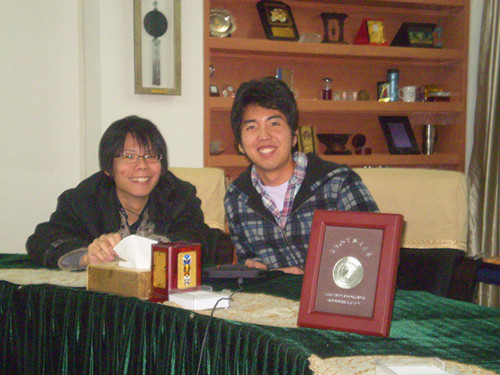The Sino-Japanese Youth Cooperation Video Conference has been held in the meeting room of Friendship Villa each Tuesday afternoon since October 2011. Two exchange students from Hiroshima Institute of Technology (HIT) Japan exchanged views with a group of Chinese students of SAU in Japan discussing topics including overseas students learning experience, Chinese and Japanese language usage, leisure activities in the free time and etc.

Representative teachers also attended this conference and negotiated deeply on bilateral cooperation, students and teachers exchange, which greatly helped to lay the foundations of exploring Sino-Japan education market in future.

About Videoconferencing
Videoconferencing is the conduct of a videoconference (also known as a video conference or video teleconference) by a set of telecommunication technologies which allow two or more locations to interact via two-way video and audio transmissions simultaneously. It has also been called 'visual collaboration' and is a type of groupware.
Videoconferencing differs from videophone calls in that it's designed to serve a conference rather than individuals. It is an intermediate form of video telephony, first deployed commercially by AT&T during the early 1970s using their Picture Phone technology.
Impact on Education
Videoconferencing provides students with the opportunity to learn by participating in two-way communication forums. Furthermore, teachers and lecturers worldwide can be brought to remote or otherwise isolated educational facilities. Students from diverse communities and backgrounds can come together to learn about one another, although language barriers will continue to persist. Such students are able to explore, communicate, analyze and share information and ideas with one another. Through videoconferencing students can visit other parts of the world to speak with their peers, and visit museums and educational facilities. Such virtual field trips can provide enriched learning opportunities to students, especially those in geographically isolated locations, and to the economically disadvantaged. Small schools can use these technologies to pool resources and provide courses, such as in foreign languages, which could not otherwise be offered.


